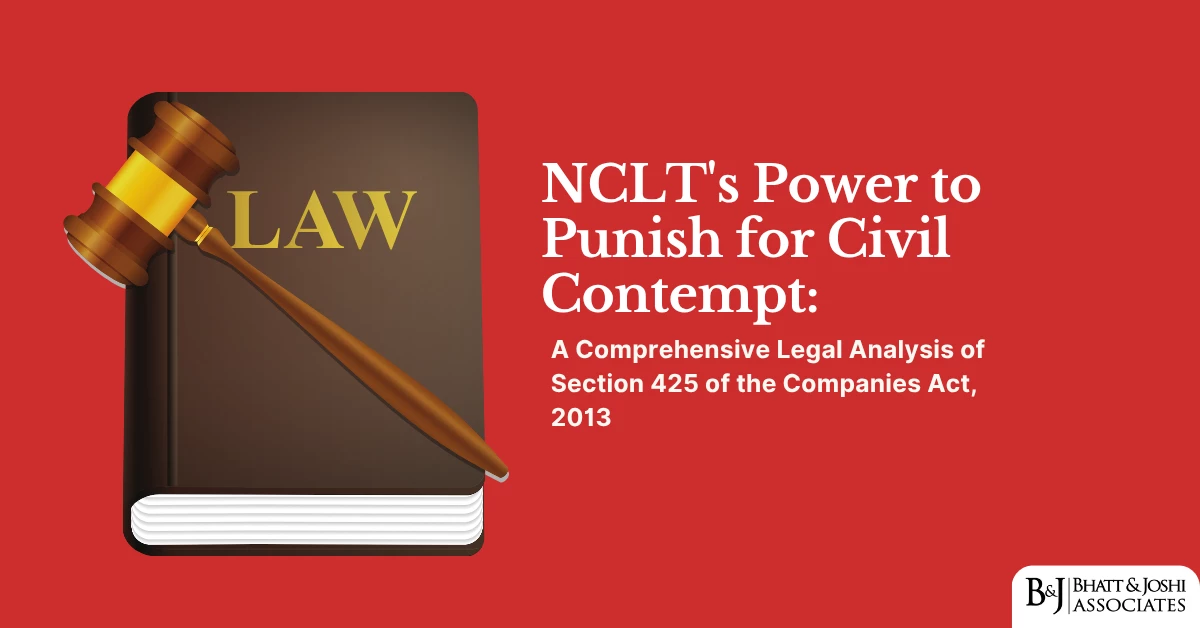Introduction
The surge of algorithmic trading in India’s securities market has presented unprecedented challenges to the regulatory framework. Over the past decade, algorithmic trading has evolved from a niche practice to a dominant force, accounting for approximately 50-60% of trades in the Indian equity derivatives market. The Securities and Exchange Board of India (SEBI), as the primary market regulator, has responded with increasingly stringent regulations aimed at ensuring market integrity, reducing systemic risk, and protecting retail investors. This article examines SEBI’s evolving approach to algorithmic trading regulation, evaluates its effectiveness, and considers whether the current regulatory regime strikes an appropriate balance between innovation and investor protection.
Evolution of Algorithmic Trading Regulations in India
Initial Regulatory Framework (2008-2012)
SEBI’s regulatory journey for algorithmic trading began in 2008 when it first acknowledged the growing influence of technology-driven trading strategies. The initial approach was relatively permissive, with SEBI Circular SEBI/MRD/DEA/CIR/P/2009/16 dated February 13, 2009, merely requiring exchanges to ensure their systems could handle algorithmic orders efficiently.
The watershed moment came in 2012 with the issuance of SEBI Circular CIR/MRD/DP/09/2012 dated March 30, 2012, which established the first comprehensive regulatory framework for algorithmic trading. This circular introduced several crucial requirements:
- Mandatory pre-trade risk controls for all algorithmic orders
- Requirements for brokers to obtain approval from exchanges before deploying algorithms
- Testing and certification requirements for algorithmic strategies
- Penalties for algorithmic trading practices that resulted in market disruption
The 2012 circular specifically stated: “Stock exchanges shall ensure that all algorithmic orders are routed through broker servers located in India and the stockbroker shall maintain logs of all trading activities to facilitate audit trail.” This established the foundation for SEBI’s jurisdiction over all algorithmic trading activities affecting Indian markets.
Tightening Controls (2013-2016)
Following several incidents of market volatility attributed to algorithmic trading, SEBI progressively tightened its regulatory stance. The SEBI Circular CIR/MRD/DP/16/2013 dated May 21, 2013, introduced more stringent pre-trade risk controls, including:
- Price checks to prevent erroneous orders
- Quantity limits on individual orders
- Exposure limits at the level of individual clients
- Order-to-trade ratio requirements to discourage excessive order submissions
The High Frequency Trading (HFT) flash crash on the National Stock Exchange on October 5, 2012, when the Nifty fell by nearly 900 points before recovering, prompted further regulatory action. In response, SEBI introduced measures to level the playing field between high-frequency traders and other market participants through circular CIR/MRD/DP/09/2016 dated August 1, 2016, which mandated:
“Stock exchanges shall ensure that tick-by-tick data feed is provided to all trading members free of cost and co-location facilities are offered on a fair and non-discriminatory basis.”
Contemporary Regulatory Framework (2018-2024)
The current regulatory approach has been shaped by SEBI’s consultation paper on “Strengthening of the Regulatory framework for Algorithmic Trading & Co-location” issued in August 2016, followed by a series of circulars that implemented its recommendations.
The SEBI Circular SEBI/HO/MRD/DP/CIR/P/2018/62 dated April 9, 2018, introduced several far-reaching measures:
- Minimum resting time for orders: Orders below a specified value must remain in the order book for at least 500 milliseconds before modification or cancellation
- Random speed bumps: Introduction of randomized order processing delays of 1-3 milliseconds
- Batch auctions: Periodic batch auctions for certain securities to reduce the advantage of speed
- Separate queues for co-location and non-co-location orders
The circular specifically stated: “Stock exchanges are directed to take necessary steps to implement the above measures latest by October 1, 2018… These measures shall be implemented on a pilot basis for a period of six months and impact analysis shall be carried out thereafter.”
Most recently, SEBI’s circular SEBI/HO/MRD2/DCAP/P/CIR/2023/55 dated March 29, 2023, extended the algorithmic trading regulatory framework to include “algo trading” by retail investors through third-party applications. The circular mandates:
“All orders emanating from an API should be treated as algorithmic orders and be subject to all the requirements applicable to algorithmic trading… Stockbrokers shall ensure that appropriate risk controls are implemented on all algorithmic orders, including those originating from API.”
Judicial Perspective on SEBI’s Regulatory Role in Algorithmic Trading Enforcement
The courts have generally deferred to SEBI’s expertise in regulating algorithmic trading, recognizing the technical complexity of the subject matter and SEBI’s statutory mandate to protect market integrity.
OPG Securities Case (2019)
In Securities and Exchange Board of India v. OPG Securities Pvt. Ltd. & Ors. (SAT Appeal No. 93 of 2019), the Securities Appellate Tribunal upheld SEBI’s authority to penalize market participants for exploiting technological advantages in a manner that undermined market fairness. The case involved allegations that OPG Securities gained unfair access to the NSE’s trading systems through co-location facilities, enabling it to engage in high-frequency trading with an advantage over other market participants.
The SAT judgment stated: “The capital market regulator is entitled to take a preventive and proactive approach in matters where algorithmic trading could potentially distort market integrity or create systemic risks, even in the absence of explicit regulations addressing all aspects of such trading at the time of the alleged violation.”
Indus Trading Case (2021)
In Indus Trading v. Securities and Exchange Board of India (SAT Appeal No. 592 of 2020), the Securities Appellate Tribunal upheld SEBI’s decision to impose penalties on a trading firm for deploying modified algorithmic strategies without obtaining fresh approval from the exchange. The SAT held:
“The requirement to obtain fresh approval for modified algorithms serves the crucial regulatory purpose of ensuring that all deployed trading algorithms have undergone adequate testing and do not pose risks to market integrity. The regulations must be interpreted purposively to achieve the broader objective of market safety rather than technically to enable circumvention.”
NSE Co-location Case (2022)
The landmark judgment in National Stock Exchange v. Securities and Exchange Board of India (Supreme Court, Civil Appeal No. 5320 of 2022) addressed issues related to preferential access in algorithmic trading. The Supreme Court upheld SEBI’s findings that the NSE had failed to provide fair and equitable access to its co-location facilities, which had given certain trading members an unfair advantage in algorithmic trading.
The Court observed: “SEBI’s regulatory jurisdiction extends to ensuring fairness in market infrastructure that facilitates algorithmic trading. Market integrity requires not only prohibition of explicitly manipulative practices but also the elimination of structural advantages that undermine the principle of equal access to market opportunities.”
Global Comparison of SEBI’s Approach to Algorithmic Trading
SEBI’s approach to algorithmic trading regulation appears more interventionist compared to some other major jurisdictions. While regulators worldwide share similar concerns about algorithmic trading, their regulatory responses have varied significantly.
United States
The U.S. Securities and Exchange Commission (SEC) has adopted a more principles-based approach through Regulation Systems Compliance and Integrity (Reg SCI) and Rule 15c3-5 (the “Market Access Rule”). These regulations focus on risk controls and system integrity rather than imposing specific restrictions on trading strategies or speed advantages.
Unlike SEBI’s approach of implementing speed bumps and minimum resting times, the SEC has generally allowed market forces to drive the evolution of algorithmic trading, intervening primarily to address specific risks like the “flash crash” of May 6, 2010, through circuit breakers and limit-up/limit-down mechanisms.
European Union
The European Union’s approach under the Markets in Financial Instruments Directive II (MiFID II) is more aligned with SEBI’s interventionist stance. MiFID II requires algorithmic traders to be registered, maintain records of all orders and transactions, and implement robust risk controls. However, it stops short of imposing SEBI’s more prescriptive measures like minimum resting times and random speed bumps.
SEBI’s Approach to Algorithmic Trading: Is the Net Too Tight?
Arguments Supporting SEBI’s Approach to Algorithmic Trading
- Market Integrity Protection: The Indian market, with its relatively higher volatility and lower liquidity in some segments, may require more stringent regulation to prevent market manipulation through algorithmic trading.
- Retail Investor Protection: India has a significant retail investor base that may be disadvantaged by sophisticated algorithmic trading strategies. SEBI’s regulations aim to level the playing field.
- Systemic Risk Management: The interconnectedness of modern financial markets and the speed of algorithmic trading can amplify systemic risks, justifying SEBI’s precautionary approach.
In L.K. Narayan v. SEBI (2022), the Bombay High Court observed: “SEBI’s mandate to protect investors and ensure market integrity may justify more interventionist regulation in areas where technological advancements create information asymmetries or unfair advantages. The regulator’s expertise in evaluating such risks deserves judicial deference.”
Arguments Against SEBI’s Strict Approach to Algorithmic Trading
- Innovation Stifling: Excessive regulation may discourage technological innovation in trading strategies and systems, potentially reducing market efficiency.
- Implementation Challenges: Some of SEBI’s requirements, such as treating all API orders as algorithmic trades, create practical implementation challenges for brokers and technology providers.
- International Competitiveness: Overly restrictive regulations may disadvantage Indian markets in the global competition for trading volumes and liquidity.
The Securities Industry Association has argued in its representations to SEBI that: “While investor protection is paramount, regulations that impose significant technological constraints or compliance costs may have the unintended consequence of reducing market liquidity and increasing transaction costs for all market participants, including the retail investors SEBI seeks to protect.”
Trends and Future Outlook in SEBI’s Algorithmic Trading Regulation
SEBI’s regulatory approach continues to evolve. The regulator’s recent focus has expanded to include:
- Retail Algorithmic Trading: The 2023 circular addressing API-based trading platforms represents SEBI’s recognition of the democratization of algorithmic trading among retail investors.
- Artificial Intelligence and Machine Learning: SEBI has begun to address the regulatory challenges posed by AI-driven algorithmic trading through its circular SEBI/HO/MRD/DOP1/CIR/P/2024/13 dated January 28, 2024, which requires disclosure of the use of AI/ML in trading algorithms.
- Regulatory Sandbox: SEBI has established a regulatory sandbox framework through circular SEBI/HO/ITD/ITD/CIR/P/2020/128 dated July 17, 2020, allowing for controlled testing of innovative technologies, including those related to algorithmic trading.
Conclusion
SEBI’s approach to regulating algorithmic trading reflects its statutory mandate to protect investors and ensure market integrity. While some market participants view the regulatory framework as overly restrictive, SEBI has consistently justified its interventionist stance based on the unique characteristics of the Indian market and the potential risks posed by unregulated algorithmic trading.
The key challenge moving forward will be to find a regulatory equilibrium that addresses legitimate concerns about market integrity and investor protection while providing sufficient space for technological innovation and market efficiency. SEBI’s recent initiatives, such as the regulatory sandbox, suggest a willingness to adopt a more flexible approach that accommodates innovation within a controlled environment.
As algorithmic trading continues to evolve, incorporating artificial intelligence and machine learning, SEBI’s regulatory framework will undoubtedly face new challenges. The effectiveness of its approach will ultimately be judged by its ability to adapt to these technological developments while maintaining the fundamental objectives of market fairness, integrity, and investor protection.














